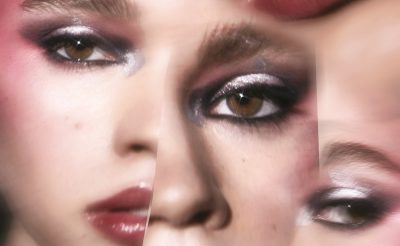Environmental and innovative, the beauty world is turning off the tap and setting its sights on waterless beauty products which save water with more potent and sustainable formulas
By 2025, 1.8 billion people will be living in countries with absolute water scarcity, while two-thirds of the world’s population might be living under water-stressed conditions. The average person in the western world now consumes 140 litres a day, and with the global population expected to reach 10.2 billion by 2050, the demand for water is set to drastically outpace supply, leaving it to be considered a luxury. This prediction may sound dramatic, but it underscores the urgency of the global crisis around this diminishing natural resource. Leading market research firm, Mintel, has found that 27% of consumers are now trying to reuse or use less water. “Water is set to become a precious commodity as consumption outstrips supply,” Charlotte Libby, global beauty and personal care analyst at Mintel, explains. “The more consumers become aware of this, the more beauty brands will need to change how they manufacture and formulate products to limit their dependence on water.”
As water becomes more of a commodity, the impacts of its scarcity are increasingly felt, and so a water-conscious beauty routine may be more important than ever before. This of course urges brands to reconsider their dependency on what could become scarce, and in the last few years, big-name beauty companies including L’Oréal, Unilever and Procter & Gamble have made it their mission to significantly decrease water consumption in an effort to preserve this endangered and vital natural resource. Unilever has reduced water abstraction related to manufacturing by more than 40%, and L’Oréal has pledged to adhere to a 60% reduction in water consumption for each nished product by this year. While these major beauty corporations are trying to reduce their carbon footprint by decreasing water consumption, other smaller brands are creating completely waterless formulas. Waterless, water-free, or anhydrous beauty refers to products that are free from water, using soothing botanical ingredients and nourishing oils instead to create more potent solutions while diminishing the need for preservatives and unnecessary fillers.
“The price point of water is much lower than other ingredients, making the final product more profitable to produce. Unfortunately, this view of water as ‘cheap’ contributes to the belief that water is an expendable and limitless resource,” comments Linda Treska, founder of Pinch of Colour, the world’s first entirely waterless make-up range. “In some beauty products, the water content can be as much as 90%, leaving very little room for other beneficial ingredients. We’ve discovered that by removing it, not only are the botanical ingredients like shea butter, apricot and camellia oils left undiluted, but the payo is more hydrating, too.”
Read: The waterless beauty products that can make your routine a little more sustainable
When you look at the ingredients list on the back of your serums, gels and moisturisers, chances are water, often named as aqua, ranks high and is therefore in the highest concentration. This means that the products and the active ingredients that the brand is marketing to consumers are mostly diluted and therefore less effective. Most skin and body products contain anywhere from 80 to 95% water, while hair shampoos, conditioners, shower gels and even facial toners can contain as much as 95 to 97% water. Used as a product filler, simply adding volume without any additional benefits, comes at a low cost for corporations but a high cost for the health of the planet.
Since water is a fairly cheap ingredient, it allows beauty companies to use less of the more expensive active ingredients and to sell the product at a lower price. Additionally, the downside is that when a formula is full of water, it tends to attract more bacteria, requiring more harmful preservatives for a longer shelf life, which are one of the main causes of sensitive skin. Instead, waterless beauty uses oils and botanical ingredients, like mango butter, camellia and jojoba oils, for the same, rich texture but in a cleaner, non-inflammatory formula. In fact, pared back formulas created without it are now proving to be much more potent, allowing ingredients and extracts to work harder, including Vitamin C, which is notoriously unstable and oxidises when brought into contact with water.
More streamlined and sustainable formulas also mean less product per application, since a smaller amount goes a longer way, which reduces excess packaging, waste, and lowers the cost of distribution. Taking that idea further, shipping waterless formulas, which are lighter weight than their water-filled counterparts, requires less space and therefore less fuel. These fringe benefits are what actually have the potential to make a real impact.
Read: What does clean beauty really mean? Here’s the lowdown
Stemming from South Korea, a country known for being pioneers in the beauty and skincare world, a growing trend for products dedicated to slashing their H2O usage were created for their skincare benefits and not necessarily their environmental credentials. Despite being synonymous with hydration, and while drinking water and consuming water-rich foods may help hydrate us internally, topically, water can dry out the skin. Water alone is not hydrating to the skin because it just evaporates, leaving you with all the synthetic emulsifiers, chemical colorants, toxic fragrances and preservatives that are added to your water-based skin care. The protective lipids that line the surface of the skin are designed to act as a barrier to water loss. But prolonged exposure to water can strip those oils and allow moisture to escape.
Another factor in the move towards waterless beauty has been the quality of water; over the past decade, a rapid decline in the quality has been seen. “Not only have calcium levels risen, but mining and fracking practices have caused increased metal and mineral content in water runoff ,” explains New York dermatologist Dr. Dennis Gross. Water with high levels of calcium is called hard water and it can create a host of skin issues. “Hard water causes a chemical reaction with your skin’s natural oils, changing the consistency and, in turn, clogging the pores and leading to acne. It also generates free radicals, causing collagen breakdown.”
So, what is the solution to H2O-heavy skincare? While we don’t want to eliminate water from our routines entirely, as skin is both hydrophilic and lipophilic, it is necessary to develop a water-conscious routine, being more mindful about how we incorporate it can benefit both our complexions and the environment.
Photography Arya Shirazi | Styling by Janine Aggen | Model: Bree Smith at Model Werk | HMU artist: Janine Aggen



